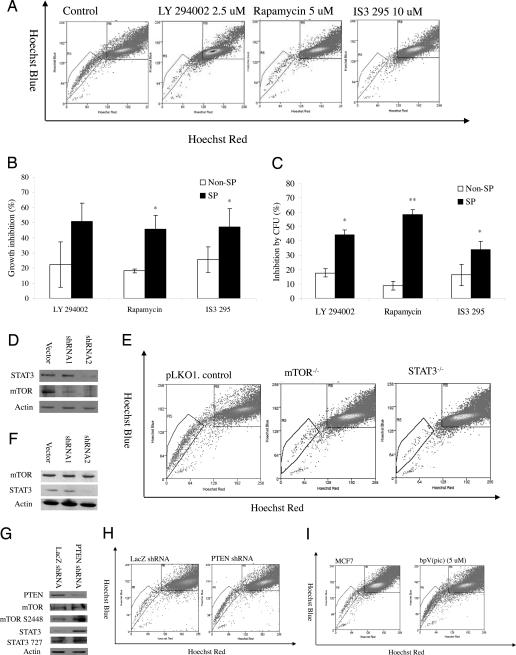Fig. 1.
Importance of PI3K/mTOR signaling and STAT3 and PTEN signaling for SP cells. (A) Decrease of the SP fraction within MCF7 cells by pathway-specific inhibitors. (B) Proliferation inhibition effects of LY294002 (2.5 μM), rapamycin (5 μM), and IS3 295 (50 μM) on MCF7 SP and non-SP cells. (C) Colony-formation inhibition effects of LY294002 (2.5 μM), rapamycin (5 μM), and IS3 295 (25 μM) on MCF7 SP and non-SP cells. (D) Western blot analysis of expression of STAT3 and mTOR in mTOR knockdown cells. (E) Decrease of SP fraction within stable mTOR and STAT3 knockdown MCF7 cells. (F) Western blot analysis of expression of STAT3 and mTOR in STAT3 knockdown cells. (G) Decrease of the SP fraction within MCF7 cells by pathway specific inhibitors bpV(pic). (H) Decrease of SP fraction within PTEN knockdown MCF7 cells. (I) Decrease of the SP fraction within MCF7 cells by PTEN specific inhibitors bpV(pic).

